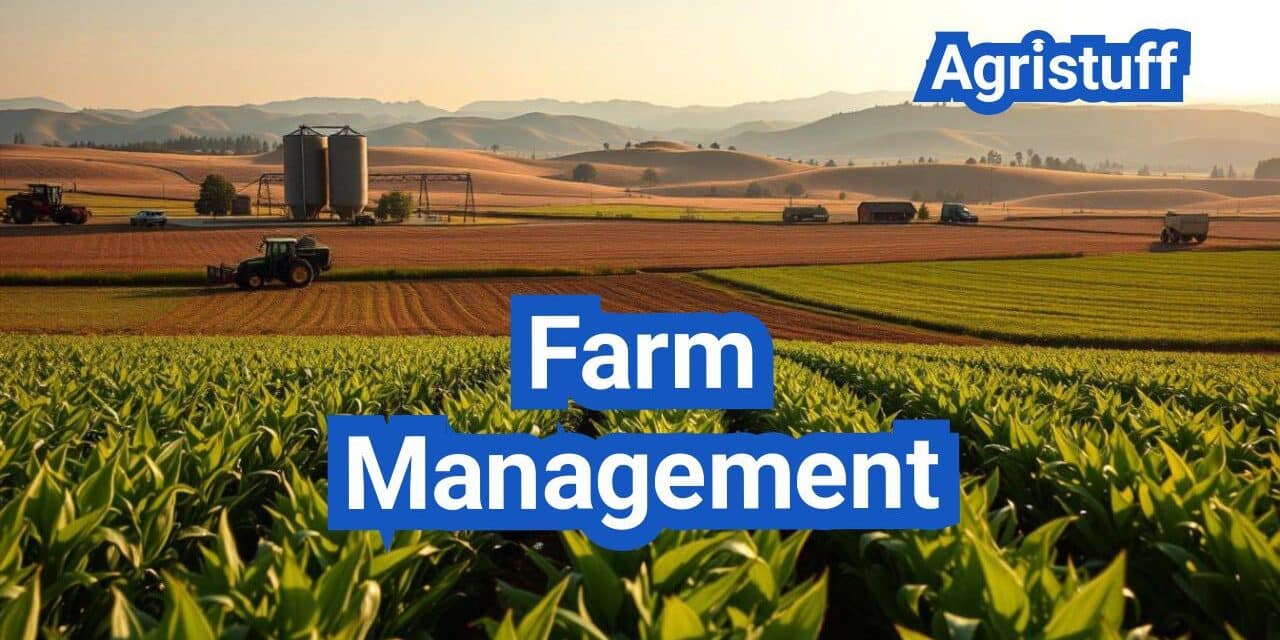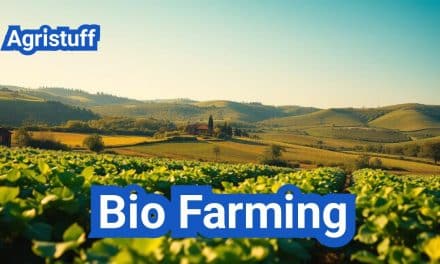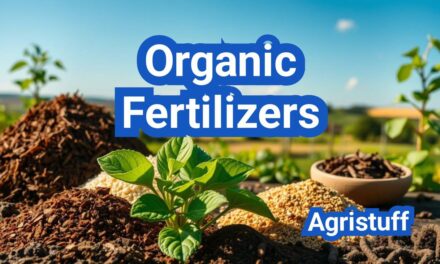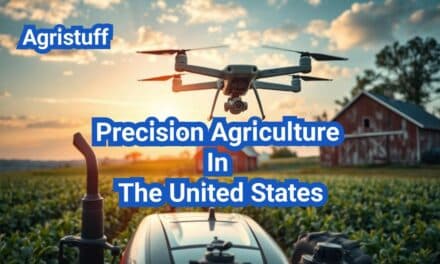Effective agricultural management is crucial for the success of farming operations. It involves planning, organizing, and supervising activities to maximize efficiency and profitability.
Farm management encompasses various aspects, including setting up a business structure, tracking income and expenses, and monitoring key financial ratios. By implementing a robust farm financial management system, farmers can make informed decisions to drive their business forward.
In the U.S., agricultural economics plays a significant role in shaping the industry. Understanding the principles of farm management is essential for farmers to stay competitive and achieve their goals.
Key Takeaways
- Farm management involves planning, organizing, and supervising farm activities.
- Effective farm financial management is crucial for making informed decisions.
- Agricultural economics plays a significant role in the U.S. farming industry.
- Implementing a robust farm management system can drive business success.
- Key performance indicators (KPIs) help farmers measure their progress and adjust strategies.
The Foundations of Effective Farm Management
The foundation of a successful farm lies in its management practices, which encompass planning, organization, and supervision. Farm management is a multifaceted discipline that involves making strategic decisions to optimize resources and maximize profitability.
Definition and Scope of Farm Management in American Agriculture
Farm management can be defined as the application of business principles to agricultural operations. It involves planning, organizing, and supervising farm activities to achieve the desired outcomes. The scope of farm management in American agriculture is broad, encompassing aspects such as crop selection, livestock production, soil conservation, and financial management.
Effective farm management requires a comprehensive understanding of agricultural practices, market trends, and regulatory requirements. It involves setting clear objectives, allocating resources efficiently, and monitoring key performance indicators (KPIs) to measure success.
The Evolution of Farm Management Practices in the U.S.
Farm management practices in the United States have evolved significantly over the years, driven by technological advancements, changing consumer preferences, and environmental concerns. The adoption of precision agriculture techniques, such as GPS-guided farming and data analytics, has improved efficiency and reduced waste.
The evolution of farm management has also been influenced by the need to address sustainability and environmental issues. Practices such as conservation tillage, crop rotation, and integrated pest management have become increasingly important.
| Era | Key Characteristics | Technologies Adopted |
|---|---|---|
| Early 20th Century | Labor-intensive, limited mechanization | Basic farm equipment |
| Late 20th Century | Increased mechanization, use of chemical inputs | Tractors, combines, pesticides, fertilizers |
| 21st Century | Precision agriculture, sustainability focus | GPS technology, drones, data analytics |
Core Principles for Successful Farm Operations
Successful farm operations are built on several core principles, including:
- Clear goal setting: Establishing specific, measurable objectives for the farm.
- Efficient resource allocation: Optimizing the use of land, labor, and capital.
- Continuous monitoring and evaluation: Regularly assessing farm performance and making adjustments as needed.
- Adaptability: Being prepared to respond to changes in market conditions, weather, and other external factors.
By adhering to these principles, farmers can improve their chances of success and build resilient agricultural operations.
Farm Management Economics and Resource Optimization

The economics of farm management is a critical aspect of modern agriculture, influencing decision-making and resource optimization. It involves understanding the principles of agricultural production economics to make informed decisions that drive profitability and sustainability.
Understanding Agricultural Production Economics
Agricultural production economics is the study of how farmers allocate resources to produce crops and livestock. It examines the relationship between inputs, such as labor, capital, and land, and outputs, like crops and livestock products. By understanding this relationship, farmers can optimize their production processes to achieve maximum efficiency.
Key factors in agricultural production economics include the cost of inputs, the price of outputs, and the technology available to farmers. For instance, the adoption of precision agriculture technologies can significantly improve crop yields while reducing input costs.
The Law of Diminishing Returns in Farming
The law of diminishing returns is a fundamental principle in agricultural production economics. It states that as the quantity of a variable input (such as fertilizer or labor) is increased, while holding other inputs constant, the marginal output will eventually decrease.
For example, applying more fertilizer to a crop may initially increase yields, but beyond a certain point, additional fertilizer may not lead to proportional increases in yield and may even decrease it due to over-fertilization.
- Understanding the law of diminishing returns helps farmers avoid over-investing in inputs.
- It enables them to identify the optimal level of input use for maximum profitability.
Optimizing Resource Allocation for Maximum Efficiency
Optimizing resource allocation is crucial for farm management economics. It involves allocating resources in a way that maximizes output while minimizing costs. This can be achieved through careful planning, monitoring, and adjustment of farm operations.
Farmers can use various tools and techniques, such as crop rotation, precision agriculture, and livestock management strategies, to optimize resource allocation. By doing so, they can improve the efficiency of their operations and enhance their profitability.
Effective resource optimization also involves considering factors like climate change, market fluctuations, and environmental sustainability to ensure long-term viability.
Strategic Farm Business Planning
Developing a strategic farm business plan is vital for farmers to achieve their goals and ensure long-term sustainability. This process involves setting clear objectives, understanding the current market conditions, and adapting to changes in the agricultural landscape.
Setting SMART Farm Business Objectives
Setting Specific, Measurable, Achievable, Relevant, and Time-bound (SMART) objectives is crucial for effective farm business planning. These objectives help farmers focus on what needs to be accomplished and provide a roadmap for success.
- Specific: Clearly define what you want to achieve.
- Measurable: Quantify your objectives so progress can be tracked.
- Achievable: Ensure that the objectives are realistic based on your resources.
- Relevant: Align your objectives with your overall business strategy.
- Time-bound: Set deadlines for achieving your objectives.
Developing a Comprehensive Farm Business Plan
A comprehensive farm business plan involves several key components, including market analysis, production planning, financial planning, and risk management.
| Component | Description |
|---|---|
| Market Analysis | Understanding the demand for your products and the competitive landscape. |
| Production Planning | Determining the optimal production levels and methods. |
| Financial Planning | Creating budgets and forecasts to manage your finances effectively. |
| Risk Management | Identifying and mitigating risks that could impact your business. |
Adapting Plans to Changing Market Conditions
The agricultural market is constantly evolving due to factors such as weather conditions, policy changes, and shifts in consumer demand. Farmers must be prepared to adapt their business plans in response to these changes.
By regularly reviewing market conditions and adjusting their strategies accordingly, farmers can stay competitive and achieve their business objectives.
Creating Effective Annual Farm Management Plans

Effective annual farm management plans are crucial for the success of agricultural operations in the United States. These plans serve as a roadmap for farmers, guiding them through the complexities of crop production, livestock management, and market fluctuations.
To create a comprehensive plan, farmers must consider various factors, including seasonal planning considerations. This involves understanding the specific needs of their crops or livestock during different times of the year.
Seasonal Planning Considerations for U.S. Farms
Seasonal planning is critical for optimizing farm productivity. For instance, farmers growing corn or soybeans must plan for planting, fertilization, and harvesting at the appropriate times. Similarly, livestock farmers need to schedule vaccinations, breeding, and feeding programs according to seasonal requirements.
Developing Monthly and Weekly Operational Schedules
Once the annual plan is in place, farmers should break it down into monthly and weekly operational schedules. This helps in managing daily tasks more effectively and ensures that all critical activities are completed on time.
| Month | Crop Activities | Livestock Activities |
|---|---|---|
| January | Soil testing, equipment maintenance | Breeding program planning |
| April | Planting, fertilizer application | Vaccinations, pasture management |
| July | Pest management, irrigation scheduling | Feed management, health checks |
Implementing Regular Planning Reviews and Adjustments
Regular planning reviews are essential to adapt to changing conditions such as weather patterns, market prices, or unexpected equipment failures. By regularly reviewing and adjusting their plans, farmers can mitigate risks and capitalize on new opportunities.
In conclusion, creating effective annual farm management plans involves careful consideration of seasonal factors, development of operational schedules, and regular review processes. By following these steps, farmers can enhance their productivity and profitability.
Farm Record-Keeping Systems That Drive Success
Farm record-keeping is the backbone of any successful agricultural operation, providing vital data for planning and execution. Effective record-keeping enables farmers to track progress, identify areas for improvement, and make informed decisions.
Essential Farm Records Every Operation Should Maintain
Maintaining comprehensive records is crucial for farm management. Essential records include financial transactions, crop yields, soil health data, and equipment maintenance logs. These records help farmers understand their operation’s performance and make data-driven decisions.
| Record Type | Description | Importance |
|---|---|---|
| Financial Transactions | Income and expenses, including sales and purchases | Helps in budgeting and financial planning |
| Crop Yields | Quantity of crops harvested per acre | Assesses productivity and profitability |
| Soil Health Data | Soil test results, including nutrient levels and pH | Informs soil management and fertilization decisions |
Digital vs. Paper-Based Record-Keeping Methods
The choice between digital and paper-based record-keeping depends on the farm’s specific needs and preferences. Digital record-keeping offers advantages such as automated backups, easy data analysis, and accessibility from multiple devices. However, it requires reliable internet connectivity and may involve initial setup costs.
Paper-based record-keeping, on the other hand, is more tactile and doesn’t rely on technology. It’s suitable for small operations or those with limited access to digital tools. However, paper records can be more prone to errors and damage.
Implementing Record-Keeping Templates and Best Practices
To streamline record-keeping, farmers can use pre-designed templates. These templates help ensure consistency and completeness of data. Best practices include regularly updating records, double-checking data for accuracy, and storing records in a secure, easily accessible location.
- Use standardized templates for consistency
- Regularly review and update records
- Train staff on record-keeping procedures
- Ensure data security and backup
By implementing effective farm record-keeping systems, agricultural operations can enhance their efficiency, profitability, and sustainability.
Farm Financial Management and Budgeting
Managing farm finances effectively is key to navigating the complexities of modern agriculture. It involves a comprehensive approach to financial planning, analysis, and decision-making.
Developing Comprehensive Agricultural Cash Flow Budgets
Creating a detailed cash flow budget is essential for farm financial management. It helps farmers anticipate and prepare for financial challenges throughout the year.
- Estimate all sources of income, including crop sales and livestock revenue.
- Identify and categorize fixed and variable expenses.
- Plan for capital expenditures and loan repayments.
- Maintain a cash reserve for unexpected expenses.
According to the USDA, “Cash flow management is critical for farm businesses to remain solvent and profitable.”
“A well-structured cash flow budget enables farmers to make informed decisions about their operations and respond to financial challenges proactively.” –
Farm Financial Management Guide
Managing Farm Assets, Liabilities, and Equity
Effective farm financial management involves understanding and managing the farm’s balance sheet, which includes assets, liabilities, and equity.
| Category | Description | Example |
|---|---|---|
| Assets | Resources owned by the farm | Land, equipment, livestock |
| Liabilities | Debts or obligations | Loans, accounts payable |
| Equity | Owner’s interest in the farm | Assets minus liabilities |
Financial Analysis Techniques for Farm Decision-Making
Farmers use various financial analysis techniques to evaluate their operation’s performance and make informed decisions.
Key financial ratios include:
- Debt-to-asset ratio
- Current ratio
- Return on assets (ROA)
- Return on equity (ROE)
These ratios help farmers assess their financial health, identify areas for improvement, and compare their performance to industry benchmarks.
Key Performance Indicators That Matter for Farm Success

In modern farming, tracking key performance indicators is essential for evaluating farm performance, identifying areas for improvement, and driving profitability. These indicators provide farmers with valuable insights into various aspects of their operations, enabling data-driven decision-making and strategic planning.
Production KPIs for Different Farm Types
Production KPIs vary depending on the type of farm. For crop farms, important production KPIs include yield per acre, crop quality, and harvest efficiency. Livestock farms, on the other hand, focus on metrics such as animal growth rates, reproductive performance, and feed conversion ratios.
For example, a corn farm might track yield per acre, monitoring it over time to identify trends and areas for improvement. A dairy farm, by contrast, might focus on milk production per cow, breeding success rates, and calf mortality rates.
Financial KPIs That Drive Profitability
Financial KPIs are crucial for assessing the economic viability of farm operations. Key financial KPIs include:
- Gross margin per acre or per animal
- Return on Investment (ROI)
- Operating expense ratio
- Debt-to-equity ratio
These financial metrics help farmers understand their cost structure, pricing strategies, and overall financial health. By monitoring these KPIs, farmers can identify opportunities to reduce costs, improve profitability, and make informed investment decisions.
Operational KPIs for Efficiency Measurement
Operational KPIs focus on the day-to-day efficiency of farm operations. Examples include:
- Equipment utilization rates
- Labor productivity
- Input usage (e.g., fuel, water, fertilizers)
- Timeliness of operations (e.g., planting, harvesting)
By tracking these operational KPIs, farmers can optimize their processes, reduce waste, and improve overall efficiency.
Environmental and Sustainability KPIs
As environmental concerns become increasingly important in agriculture, tracking environmental and sustainability KPIs is crucial. These may include:
- Soil health indicators (e.g., organic matter content, erosion rates)
- Water usage and conservation metrics
- Biodiversity measures (e.g., habitat creation, species counts)
- Greenhouse gas emissions
Monitoring these KPIs helps farmers assess their environmental impact and implement more sustainable practices.
To illustrate how these KPIs can be used in practice, consider the following table:
| KPI | Description | Example |
|---|---|---|
| Yield per Acre | Measures crop production efficiency | 250 bushels/acre (corn) |
| Feed Conversion Ratio | Assesses livestock production efficiency | 4.5 kg feed/kg gain (poultry) |
| Gross Margin per Acre | Evaluates financial performance | $500/acre (soybeans) |
| Soil Organic Matter Content | Indicates soil health | 3.5% (sandy loam soil) |
By tracking and analyzing these diverse KPIs, farmers can gain a comprehensive understanding of their operation’s performance, identify areas for improvement, and make informed decisions to drive success and sustainability in their agricultural endeavors.
Crop Management Planning and Performance Metrics

Optimizing crop production requires a comprehensive approach that includes careful planning, efficient resource allocation, and continuous performance monitoring. Effective crop management involves making strategic decisions that balance productivity with sustainability.
Strategic Crop Rotation and Planning Approaches
Crop rotation is a fundamental aspect of crop management planning, offering numerous benefits including improved soil health, reduced pest and disease pressure, and increased biodiversity. A well-designed crop rotation plan can significantly enhance the overall efficiency and resilience of farm operations.
- Improve soil fertility and structure
- Reduce reliance on chemical inputs
- Enhance crop yields and quality
- Support biodiversity and ecosystem services
When developing a crop rotation plan, farmers should consider factors such as climate, soil type, market demand, and the specific needs of different crops. Strategic planning can help in optimizing the rotation sequence to achieve the desired outcomes.
Implementing Effective Soil Nutrient Management Plans
Soil nutrient management is critical for maintaining soil fertility and supporting healthy crop growth. An effective soil nutrient management plan involves regular soil testing, appropriate fertilizer application, and the use of conservation tillage or cover crops to minimize nutrient loss.
“Soil testing is the foundation of a good nutrient management program. It provides the necessary information to make informed decisions about fertilizer applications.”
Key components of a soil nutrient management plan include:
- Conducting regular soil tests to determine nutrient levels
- Applying fertilizers based on soil test recommendations
- Using cover crops to enhance soil health and reduce erosion
- Implementing conservation tillage practices
Key Metrics for Measuring Crop Production Efficiency
To evaluate the effectiveness of crop management practices, farmers need to track key performance metrics. These metrics provide insights into crop yields, input efficiency, and overall farm productivity.
| Metric | Description | Importance |
|---|---|---|
| Yield per Acre | Measures the quantity of crop produced per acre | Indicates productivity and efficiency |
| Input Costs per Acre | Tracks the costs associated with crop production | Helps in managing expenses and profitability |
| Nutrient Use Efficiency | Assesses how effectively crops utilize applied nutrients | Impacts fertilizer application and environmental sustainability |
By monitoring these metrics, farmers can identify areas for improvement and make data-driven decisions to optimize their crop management practices.
Livestock Production Management and Critical KPIs

The backbone of a successful farm lies in its ability to manage livestock production efficiently. Effective livestock production management involves a multifaceted approach that encompasses health monitoring, feed efficiency, and reproduction management.
Comprehensive Livestock Health and Production Monitoring
Monitoring livestock health and production is critical for identifying potential issues before they become major problems. This involves regular veterinary checks, tracking production metrics such as milk yield or weight gain, and maintaining detailed health records.
Key health monitoring practices include:
- Regular vaccinations and parasite control
- Monitoring for signs of illness or stress
- Maintaining accurate health records
| Health Monitoring Metric | Description | Importance |
|---|---|---|
| Vaccination Rate | Percentage of animals vaccinated | Prevents disease outbreaks |
| Morbidity Rate | Rate of illness among the livestock | Indicates overall health and welfare |
Feed Efficiency and Cost Management Strategies
Feed efficiency is a crucial factor in livestock production, directly impacting profitability. Strategies to improve feed efficiency include optimizing feed formulations, minimizing waste, and selecting breeds with high feed conversion rates.
“The key to successful livestock production is not just about minimizing costs, but also about maximizing the efficiency of every input, particularly feed.” –
Dr. John Smith, Livestock Production Expert
Feed cost management strategies:
- Regularly reviewing and adjusting feed formulations
- Implementing feeding systems that reduce waste
- Monitoring feed conversion ratios
Breeding and Reproduction Performance Metrics
Effective breeding and reproduction management is vital for maintaining a productive livestock operation. Key performance indicators in this area include conception rates, calving intervals, and reproductive health metrics.
Reproduction metrics to track:
- Conception rate
- Calving interval
- Birth weight and growth rate
| Reproduction Metric | Description | Target |
|---|---|---|
| Conception Rate | Percentage of successful conceptions | >90% |
| Calving Interval | Time between successive births |
Farm Risk Management Strategies for U.S. Producers

U.S. farmers face a myriad of risks that can significantly impact their operations, making robust risk management strategies essential. Effective farm risk management involves a comprehensive approach to identifying, assessing, and mitigating risks that can affect agricultural productivity and profitability.
Identifying and Assessing Agricultural Risks
The first step in managing risk is to identify and assess potential hazards. Agricultural risks can be broadly categorized into production, market, financial, legal, and human risks. Production risks include factors like weather conditions, pests, and diseases, while market risks involve fluctuations in commodity prices and demand.
Key agricultural risks include:
- Weather-related events such as droughts, floods, and storms
- Pests and diseases affecting crops and livestock
- Market volatility and price fluctuations
- Regulatory changes and compliance issues
- Labor shortages and workforce challenges
Whole-Farm Revenue Protection and Insurance Options
Whole-Farm Revenue Protection (WFRP) is a critical tool for farmers to manage risk. WFRP insurance provides coverage against loss of revenue due to various factors, including price changes, yield losses, and changes in production.
| Insurance Type | Description | Coverage Level |
|---|---|---|
| Whole-Farm Revenue Protection (WFRP) | Covers revenue loss due to various factors | 50-85% |
| Crop Insurance | Protects against crop yield and revenue losses | 50-85% |
| Livestock Insurance | Covers losses related to livestock production | Varies by program |
Developing Effective Contingency and Disaster Plans
Contingency planning is essential for farmers to respond effectively to unexpected events. A well-developed contingency plan outlines procedures to follow during emergencies, ensuring minimal disruption to farm operations.
Key components of a contingency plan include:
- Risk assessment and identification of potential disasters
- Emergency response procedures
- Communication strategies for stakeholders
- Recovery plans for post-disaster operations
By implementing these farm risk management strategies, U.S. producers can better navigate the challenges of modern agriculture and protect their operations against unforeseen risks.
Farm Management Software and Technology Solutions

Farm management software and mobile apps are revolutionizing the way farmers manage their daily operations. By leveraging technology, farmers can streamline processes, improve efficiency, and make data-driven decisions.
Evaluating Farm Management Software Options for Your Operation
When selecting farm management software, it’s crucial to evaluate options based on your operation’s specific needs. Consider factors such as ease of use, scalability, and integration with existing systems. Popular farm management software includes Conservis, which offers comprehensive solutions for crop management, financial analysis, and operational planning.
Key Features to Look for in Farm Management Software:
- Data analytics and reporting
- Field mapping and crop monitoring
- Financial management and budgeting
- Integration with other agricultural tools and services
Mobile Apps for On-the-Go Farm Management
Mobile apps have become indispensable tools for farmers, allowing them to manage their operations on-the-go. These apps can be used for tasks such as monitoring crop health, tracking equipment maintenance, and recording field activities. When choosing mobile apps, consider their compatibility with your existing software and their ability to sync data across devices.
Popular Mobile Apps for Farm Management:
- Crop monitoring apps like Cropio and FarmLogs
- Equipment management apps such as Agroptima
- Field recording apps like FarmNotes
Integrating Technology into Daily Farm Operations
Successfully integrating technology into daily farm operations requires a strategic approach. Start by identifying areas where technology can have the most significant impact, such as improving crop yields or reducing operational costs. Provide training to staff on new software and apps, and ensure that the technology is compatible with your existing infrastructure.
Best Practices for Technology Integration:
- Assess your operational needs and identify areas for improvement
- Choose technology solutions that align with your goals
- Implement a phased rollout to minimize disruption
- Monitor and evaluate the effectiveness of new technologies
Sustainable Resource Management in Modern Farming

Effective sustainable resource management is essential for balancing productivity and environmental stewardship in contemporary farming. As the agricultural sector continues to face challenges such as climate change, soil degradation, and water scarcity, adopting sustainable practices has become increasingly critical.
Land and Soil Conservation Best Practices
Land and soil conservation are fundamental to sustainable agriculture. Techniques such as conservation tillage, cover cropping, and crop rotation help reduce soil erosion, improve soil health, and enhance biodiversity. Conservation tillage, for instance, minimizes the disturbance of soil by reducing the number of tillage operations, thereby preserving soil organic matter and reducing erosion.
Cover cropping involves planting crops between crop cycles to protect and enrich the soil. This practice not only reduces soil erosion but also improves soil fertility, structure, and overall health. Crop rotation, another key practice, involves alternating the types of crops grown on a specific area of land to maintain soil fertility and reduce pest and disease pressure.
Water Management and Efficiency Techniques
Water management is crucial in modern farming, particularly in regions prone to drought or with limited water resources. Techniques such as drip irrigation and precision agriculture help optimize water use. Drip irrigation delivers water directly to the roots of plants, reducing evaporation and runoff, while precision agriculture uses technology to monitor and manage field variability, ensuring that water is applied where and when it’s needed.
Other water-saving strategies include using drought-tolerant crop varieties and implementing rainwater harvesting systems. These practices not only conserve water but also enhance the resilience of farming operations to climate variability.
Energy Use Optimization on American Farms
Energy use optimization is another critical aspect of sustainable resource management in farming. Farmers can reduce energy consumption by adopting energy-efficient equipment and practices such as renewable energy integration. For example, installing solar panels or wind turbines can provide a clean source of energy for farm operations, reducing reliance on fossil fuels.
Additionally, optimizing machinery use and improving the efficiency of farm operations can lead to significant energy savings. This can be achieved through better planning, regular maintenance of equipment, and the use of precision agriculture technologies that help in reducing unnecessary energy use.
By implementing these sustainable resource management practices, farmers can not only reduce their environmental footprint but also improve the long-term productivity and viability of their operations.
Human Resource Management for Agricultural Operations
Effective human resource management is crucial for the success of agricultural operations in the United States. As the agricultural sector continues to evolve, managing farm workers efficiently has become increasingly important for maximizing productivity and maintaining a competitive edge.
Hiring and Training Farm Workers in the U.S. Labor Market
The process of hiring and training farm workers is complex and challenging due to the seasonal nature of agricultural work and the physical demands of the job. To attract and retain skilled workers, farm managers must offer competitive wages, benefits, and working conditions.
Training programs are essential for ensuring that farm workers have the necessary skills to perform their tasks safely and efficiently. These programs should cover a range of topics, including equipment operation, crop management, and safety procedures.
Labor Efficiency Measurement and Management
Measuring labor efficiency is critical for optimizing farm operations and reducing costs. Key performance indicators (KPIs) such as labor hours per acre, labor cost per unit of production, and worker productivity can help farm managers identify areas for improvement.
| KPI | Description | Target Value |
|---|---|---|
| Labor Hours per Acre | Total labor hours divided by total acres | Less than 10 hours/acre |
| Labor Cost per Unit | Total labor cost divided by total units produced | Less than $0.50/unit |
| Worker Productivity | Output per worker per hour | More than 2 units/hour |
Safety Compliance and Regulatory Considerations
Ensuring a safe working environment is not only a legal requirement but also essential for maintaining a productive workforce. Farm managers must comply with relevant regulations, such as OSHA standards, and implement safety protocols to prevent accidents and injuries.
“The safety and health of agricultural workers is a top priority, and employers must take all necessary steps to ensure a safe working environment.” – OSHA
Regular safety training, equipment maintenance, and hazard assessment are critical components of a comprehensive safety program. By prioritizing safety, farm managers can reduce the risk of accidents, improve worker morale, and maintain compliance with regulatory requirements.
Marketing and Sales Management for Farm Products
Marketing and sales management play a pivotal role in determining the profitability of farm products by connecting them with the right buyers. Effective strategies in this area enable farmers to navigate the complexities of the agricultural market, ensuring their products reach the target audience.
Understanding Grain Marketing Basis and Commodity Markets
Grain marketing involves understanding the basis, which is the difference between the local cash price and the futures price of a commodity. Farmers need to grasp how to use futures contracts and options to hedge against price fluctuations. Commodity markets provide a platform for buying and selling grains and other agricultural products.
Key considerations in grain marketing include:
- Monitoring market trends and news
- Understanding the factors that influence grain prices
- Using marketing tools like futures and options
- Managing basis risk
Direct-to-Consumer Sales Strategies for American Farmers
Direct-to-consumer sales allow farmers to capture a larger share of the profit by selling products directly to consumers. Strategies include:
- Developing a strong online presence through websites and social media
- Participating in farmers’ markets and community-supported agriculture (CSA) programs
- Creating value-added products to differentiate offerings
Benefits of direct-to-consumer sales include:
- Increased profit margins
- Building customer loyalty
- Gathering valuable customer feedback
Wholesale, Cooperative, and Export Marketing Options
Farmers can also explore wholesale, cooperative, and export marketing channels to diversify their sales. Wholesale marketing involves selling products in bulk to retailers or other businesses. Cooperatives allow farmers to pool resources and market products collectively. Export marketing opens up international markets, providing opportunities for growth.
| Marketing Channel | Characteristics | Benefits |
|---|---|---|
| Wholesale | Bulk sales to retailers or businesses | Large volume sales |
| Cooperative | Collective marketing by farmers | Shared resources and risk |
| Export | Selling products internationally | Access to global markets |
By understanding and leveraging these marketing and sales management strategies, farmers can improve their competitiveness and profitability in the agricultural market.
Professional Farm Management Services in the United States
In the complex world of modern agriculture, professional farm management services offer a lifeline to farmers seeking to maximize efficiency and reduce costs. These services have become increasingly vital for agricultural businesses aiming to stay competitive in a challenging market.
Determining the Need for Professional Farm Management
Farmers should consider hiring professional farm management services when they face challenges in managing their operations efficiently. This could be due to a lack of expertise, insufficient time, or the complexity of their farming operations. Professional farm management can help in making informed decisions, optimizing resource allocation, and improving overall profitability.
According to a study by the National Agricultural Statistics Service, farms with professional management tend to have higher productivity and better financial performance. This is because professional managers bring expertise in areas such as crop selection, soil management, and financial planning.
Types of Farm Management Services Available
There are various types of farm management services available to landowners, including:
- Operational management: Overseeing the day-to-day activities of the farm.
- Financial management: Handling budgeting, accounting, and financial reporting.
- Marketing services: Assisting with the sale of farm products and developing marketing strategies.
- Strategic planning: Providing guidance on long-term planning and goal setting.
These services can be tailored to meet the specific needs of individual farms, ensuring that landowners receive the support they need to succeed.
Evaluating Farm Management Companies
When selecting a farm management company, landowners should consider several key factors. These include the company’s experience, the range of services offered, and their track record of success. It’s also important to assess their knowledge of local market conditions and their ability to adapt to changing circumstances.
A quote from John Deere’s Agricultural Management highlights the importance of professional management: “Effective farm management is about making informed decisions that drive profitability and sustainability.”
| Criteria | Description | Importance Level |
|---|---|---|
| Experience | Years of experience in farm management | High |
| Service Range | Variety of services offered (operational, financial, marketing) | High |
| Success Track Record | History of successful farm management outcomes | High |
| Local Market Knowledge | Understanding of local agricultural conditions and markets | Medium |
By carefully evaluating these factors, landowners can select a farm management company that meets their needs and helps them achieve their agricultural goals.
Building a Resilient and Profitable Farm Management System
Effective farm management is crucial for achieving success in today’s complex agricultural landscape. By implementing a comprehensive farm management system, farmers can optimize productivity, reduce risks, and improve profitability.
A resilient farming operation relies on careful planning, precise record-keeping, and data-driven decision-making. By setting clear objectives, monitoring key performance indicators, and adapting to changing market conditions, farmers can build a robust and adaptable farm management system.
To achieve profitable farming, it’s essential to focus on farm productivity optimization. This involves leveraging technology, optimizing resource allocation, and implementing efficient operational practices. By doing so, farmers can maximize their returns on investment and maintain a competitive edge in the market.
In conclusion, building a resilient and profitable farm management system requires a holistic approach that integrates planning, record-keeping, and performance monitoring. By adopting these strategies, farmers can navigate the challenges of modern agriculture and achieve long-term success.
FAQ
What is farm management, and why is it important?
Farm management refers to the process of planning, organizing, and supervising farm activities to maximize efficiency and profitability. It is crucial for the success of agricultural operations, enabling farmers to make informed decisions and achieve their goals.
What are the core principles of effective farm management?
The core principles of effective farm management include setting clear objectives, optimizing resource allocation, and monitoring key performance indicators. These principles help farmers to develop a comprehensive plan, manage their resources efficiently, and measure their performance effectively.
How can farmers optimize their resources to maximize efficiency and profitability?
Farmers can optimize their resources by understanding the law of diminishing returns, optimizing resource allocation, and leveraging technology to improve their management practices. This enables them to minimize costs, maximize output, and achieve their goals.
What is the importance of record-keeping in farm management?
Record-keeping is essential in farm management as it enables farmers to maintain accurate and effective records, track their performance, and make informed decisions. This includes maintaining records of crop yields, livestock production, financial transactions, and other key metrics.
How can farmers develop effective annual farm management plans?
Farmers can develop effective annual farm management plans by considering seasonal planning considerations, developing operational schedules, and implementing regular planning reviews. This enables them to create a comprehensive plan that aligns with their goals and objectives.
What are the key performance indicators that matter for farm success?
The key performance indicators that matter for farm success include production KPIs, financial KPIs, operational KPIs, and environmental KPIs. These metrics enable farmers to measure their performance, identify areas for improvement, and make informed decisions.
How can farmers manage their finances effectively?
Farmers can manage their finances effectively by developing comprehensive agricultural cash flow budgets, managing farm assets and liabilities, and using financial analysis techniques. This enables them to minimize financial risks, maximize profitability, and achieve their goals.
What is the role of technology in farm management?
Technology plays a crucial role in farm management, enabling farmers to leverage farm management software, mobile apps, and other digital tools to improve their management practices. This includes using precision agriculture, farm record-keeping systems, and other technologies to optimize their operations.
How can farmers manage their risks effectively?
Farmers can manage their risks effectively by identifying and assessing agricultural risks, using whole-farm revenue protection and insurance options, and developing contingency plans. This enables them to minimize risks, maximize profitability, and achieve their goals.
What are the benefits of sustainable resource management in modern farming?
The benefits of sustainable resource management in modern farming include land and soil conservation, water management, and energy use optimization. This enables farmers to minimize their environmental impact, maximize their productivity, and achieve their goals.
How can farmers market their products effectively?
Farmers can market their products effectively by understanding grain marketing basis and commodity markets, using direct-to-consumer sales strategies, and leveraging wholesale, cooperative, and export marketing options. This enables them to maximize their revenue, minimize their risks, and achieve their goals.
What are the benefits of professional farm management services?
The benefits of professional farm management services include expertise in farm management, access to technology and resources, and improved efficiency and profitability. This enables farmers to achieve their goals, minimize their risks, and maximize their returns.
Conclusion of: Farm Management
Why farm management is your competitive advantage
Strong farm management turns uncertainty into decisions you can defend, budgets you can fund, and operations your team can follow day by day. Instead of chasing problems at harvest, you make annual plans, keep tight records, and track a short list of KPIs that actually move profitability and resilience on U.S. farms. That discipline helps with lenders, insurers, audits, and—most importantly—consistent margins when markets and weather swing. USDA NIFA: Farm management resources
Start with an annual planning rhythm
Great farm management runs on a calendar you can revisit each month: winter strategy and budgets, spring logistics, in-season marketing checkpoints, and post-harvest debriefs. Putting these on the calendar—and inviting advisors when needed—keeps plans from living only in someone’s head and creates accountability the whole team can see. MU Extension: Yearly calendar of farm business meetings
Use climate outlooks to shape your annual plan
Weather is uncertainty number one for farm management, so build the plan around reputable seasonal outlooks and update them quarterly. Long-lead precipitation and temperature guidance can steer seed selection, irrigation scheduling, forage plans, and contingency budgets before risk hardens into losses. NOAA Climate Prediction Center: Seasonal outlooks
Track drought status as a standing agenda item
Because effective farm management means reacting early, add drought status to every operating meeting: grazing moves, irrigation triggers, supplemental feed, and crop switching if thresholds are met. The drought map is a simple red-flag tool the whole team can follow. U.S. Drought Monitor
Budget cash first, then profits
Profits matter, but cash flow is oxygen for farm management. Build a 12-month cash flow budget that times input purchases, principal payments, family living, taxes, and marketing income, then revisit monthly. This prevents profitable operations from stalling because cash is in the wrong month. Iowa State Ag Decision Maker: Cash flow & financial files
Record-keeping: what to keep and why it pays
Good farm management records turn memories into proof: fields, inputs, labor, treatments, yields, inventories, equipment hours, and sales. Records lower borrowing friction, strengthen crop insurance claims, speed up audits, and unlock grants and conservation programs that require documentation. OSU Extension: USDA program record-keeping requirements
Choose systems that make data easier, not harder
When selecting tools for farm management, prioritize systems your team will actually use: simple field logs, accounting that supports enterprise-level reports, and a home for KPIs. Cloud backups and mobile entry reduce “I’ll write it later” gaps, and integrating finance with production beats paper piles every time. UMN CFFM: FINBIN benchmarks (annual report)
Compliance update: pesticide RUP records changed in 2025
Compliance is part of farm management. In 2025, USDA rescinded the federal rule requiring private applicators to keep restricted-use pesticide (RUP) records under 7 CFR Part 110. Many states still require records, and other federal rules (e.g., WPS label-specific posting) may apply, so keep robust application records anyway. Federal Register: Rescission of 7 CFR Part 110 (effective July 11, 2025)
Keep Veterinary Feed Directive (VFD) documents two years
Animal health documentation is essential to farm management. VFD orders and related distributor records must be retained for two years and made available to FDA on request; build that retention into your digital filing habits. FDA: Veterinary Feed Directive record-keeping
Produce safety and market access
For diversified produce farms, farm management should include FSMA Produce Safety Rule readiness—particularly water, worker hygiene, training, and records—because buyers increasingly require it, and it protects your brand. FDA: FSMA Produce Safety Rule
GAP audits: when buyers ask for verification
Some markets require Good Agricultural Practices audits, so plan in farm management for SOPs, logs, and corrective actions that align with the audit checklist. Treat the audit like a preseason drill that makes food safety the daily habit you want it to be. USDA AMS: GAP&GHP Audit Program
Conservation records: nutrient and water plans
Modern farm management tracks soil tests, application records, and irrigation scheduling to hit yield targets without wasting inputs. Following NRCS Nutrient Management (CPS 590) documentation reduces losses, protects water, and often qualifies you for incentives. USDA NRCS: Nutrient Management (CPS 590)
Make health and treatment notes easy to capture
Practical farm management means making the right thing the easy thing: keep treatment cards in the parlor or barn, scan them weekly, and sync to animal records so withdrawal times and protocols are always visible. Penn State Extension: Cow health record cards
Understand insurance requirements in your records
Because risk is part of farm management, align record-keeping with your crop insurance policy. Whole-Farm Revenue Protection (WFRP) can fit diversified farms if you maintain clean tax and sales records, so keep invoices and ledgers audit-ready. USDA RMA: Whole-Farm Revenue Protection
Pick a short, decisive KPI set
Clarity beats clutter in farm management. Track a handful of KPIs monthly: net farm income (NFI), operating profit margin, current ratio, working capital, debt-to-asset, asset turnover, yield per acre (or per head), and marketing basis and price realization. Color-code them and trend year-over-year. UMN Extension: Farm Financial Scorecard
Financial KPIs that lenders respect
Every farm management dashboard should show liquidity (current ratio, working capital), solvency (debt-to-asset), efficiency (asset turnover), and profitability (operating margin, return on assets). Track them against benchmarks and add simple notes on drivers each month. Michigan State Extension: Farm Financial Scorecard
Production KPIs: yields, quality, and animal performance
On the production side of farm management, trend yield per acre by field with five-year histories, and for livestock trend ADG, feed conversion, mortality, and cull rate. Tie anomalies to notes in your field or herd logs so you can actually fix causes, not symptoms. USDA NASS: Quick Stats (benchmark yields)
Herd nutrition and space drive performance
Nutrition and stocking density decisions belong on the farm management dashboard because they show up in milk, growth, and health metrics. Align rations with production groups and avoid overstocking to protect feed efficiency and reproduction. UMN Extension: Stocking density and performance
Marketing KPIs: know your basis
Basis—the cash price minus futures—is one of the most practical farm management KPIs. Track your typical basis by delivery point and season. It guides storage, hedging choices, and whether a contract is competitive today versus your historical average. UW Extension: Understanding grain basis
Benchmark against reliable data
Smart farm management compares your numbers to something real. Use county or state yields, cost trends, and price series to set realistic targets and to explain results to lenders and partners without guesswork. USDA NASS: Data & statistics (county maps, codes)
Keep one “living” scorecard
A one-page scorecard is the heartbeat of farm management: top row for finance (NFI, margin, current ratio), middle for production (yields, ADG/FCR), and bottom for marketing (basis, price achieved vs. target). Update it monthly and discuss color-coded changes in your operating meeting. UMN Extension: Financial scorecard template
Tie KPIs to action
KPIs only improve farm management when they trigger actions. If the current ratio dips below 1.5, defer a capital purchase; if basis is narrower than average, advance sales; if ADG stalls, review stocking density or ration. Add “if/then” rules next to each KPI in your scorecard. Iowa State Ag Decision Maker: Financial performance tools
Use ERS outlooks to set expectations with your lender
Sector-level outlooks won’t price your corn, but they shape farm management conversations on working capital, leverage, and stress tests. Bring current ERS forecasts to annual planning so everyone aligns on risk and liquidity needs. USDA ERS: Farm sector income forecast
Risk management: link records to your policy
Insurance decisions are part of farm management. If you use WFRP, confirm documentation expectations with your agent and keep sales receipts, enterprise logs, and tax forms organized by policy year to speed claims and reduce headaches. RMA: WFRP Handbook (procedures & documentation)
Marketing discipline: pre-harvest and post-harvest plans
Written marketing plans make farm management calmer when markets swing. Pre-harvest: target prices based on costs and basis; post-harvest: storage strategy and sell-by dates to avoid fee creep. Review monthly and adjust, don’t wing it. K-State: Interactive crop basis tool
Tax readiness is a management task
Tax season goes smoother when farm management keeps receipts, mileage, depreciation schedules, and enterprise inventories squared away before year-end. Build a November checklist so you and your CPA can optimize—not scramble. IRS Publication 225: Farmer’s Tax Guide
Run better meetings, make better decisions
Effective farm management meetings are short, scheduled, and focused: progress on last month’s actions, KPI exceptions, calendar deadlines, and decisions needed. Park side discussions and end with assigned owners and due dates. MU Extension: Three types of farm meetings
Final thought
The best farm management systems are simple enough to run every week and strong enough to inform big decisions. If you plan the year, capture the facts, and review a concise scorecard, you’ll make fewer emergency decisions—and more profitable, timely ones. USDA NIFA: Farm management overview
Sources & References
- USDA NIFA – Farm Management
- Iowa State Ag Decision Maker – Financial & Recordkeeping
- USDA ERS – Farm Sector Income Forecast (Sept 3, 2025)
- USDA NASS – Quick Stats Database
- FDA – FSMA Produce Safety Rule
- USDA AMS – GAP/GHP Audit Program
- USDA RMA – Whole-Farm Revenue Protection
- Federal Register – Rescission of 7 CFR Part 110 (effective July 11, 2025)
- FDA – Veterinary Feed Directive (VFD) Requirements
- MU Extension – Yearly Calendar of Family Farm Meetings
- MU Extension – Three Types of Farm Meetings
- NOAA CPC – Seasonal Outlooks
- U.S. Drought Monitor
- K-State – Interactive Crop Basis Tool
- UW Extension – Understanding Basis
- Penn State Extension – Transition cow health records
- IRS – Publication 225, Farmer’s Tax Guide










